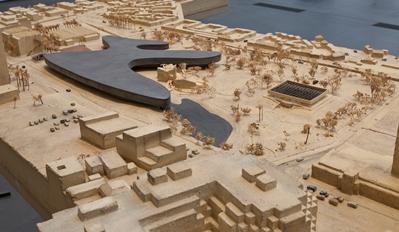This week may turn out to be a historic moment for LACMA and Los Angeles County if indeed we proceed with the new museum plan that we have sketched out with Pritzker Prize-winning architect Peter Zumthor, and that we are exhibiting in The Presence of the Past: Peter Zumthor Reconsiders LACMA—opening to members on Thursday and to the public on Sunday, and presented under the auspices of the Getty's Pacific Standard Time Presents series of architecture exhibitions. To complement the other, more historical shows that are part of that initiative, ours is a glimpse of a potential future for architecture in Los Angeles.
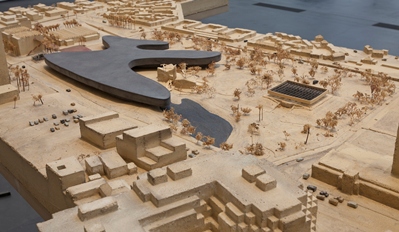 Installation view, The Presence of the Past: Peter Zumthor Reconsiders LACMA
Installation view, The Presence of the Past: Peter Zumthor Reconsiders LACMA
The plan is as thoughtful as it is bold: from its state-of-the-art energy systems that will produce more energy than they use, to its design to have twice as many artworks available and accommodate more visitors while at the same time lowering operating costs, to its futuristic shape that would become an architecture icon for LA. And most importantly, the building is intended to have some of the most beautiful and diverse galleries ever envisioned for exhibiting artworks.
The fundamental idea of rebuilding the east side of LACMA’s campus is one that has gestated for many years, and in fact predates either my own or Zumthor’s involvement. I was inspired when, in 2001, LACMA’s Board of Trustees voted to pursue Rem Koolhaas and OMA’s competition entry, also shown in the exhibition. Rejecting an expansion brief, the plan instead proposed replacing all the museum’s 1965 and 1986 buildings with an entirely new model for organizing and viewing works of art in an encyclopedic museum. (The architecturally significant Pavilion for Japanese Art would be preserved.) LACMA’s original buildings were aging and had numerous functional and building-code challenges; and, since the early 1970s, they also bore no resemblance to William Pereira’s original and elegant vision. They have only become more compromised with each addition. Likewise the 1986 building (now known as the Art of the Americas Building) also had difficulties from its beginnings. Its circulation system connecting all the galleries and buildings was never completed.
Koolhaas and his team argued convincingly that it would be far more efficient to replace them with a new structure than to try to renovate them in the future. LACMA, they asserted, was the only large encyclopedic museum in the world that had an opportunity to reconsider itself completely rather than grow, like others, by the accretion of new spaces grafted onto old ones. LACMA was the only one that could be entirely reimagined for the twenty-first century.
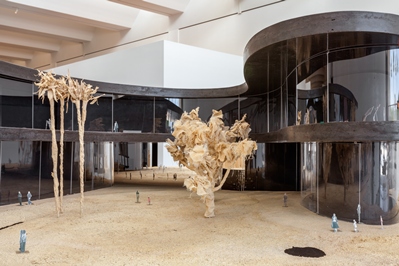 Installation view, The Presence of the Past: Peter Zumthor Reconsiders LACMA
Installation view, The Presence of the Past: Peter Zumthor Reconsiders LACMA
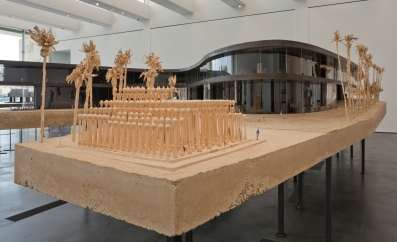 Installation view, The Presence of the Past: Peter Zumthor Reconsiders LACMA
Installation view, The Presence of the Past: Peter Zumthor Reconsiders LACMA
That big idea was largely what enticed me to move to Los Angeles in 2006 to begin a long-term effort to develop this museum, which had, thanks to the foresight of its trustees, already acquired the adjacent block occupied by the historic May Company building. Plans were already under way to consolidate it into one large campus under the guidance of the architect Renzo Piano with lead philanthropic contributions by Eli and Edythe Broad and Lynda and Stewart Resnick. An expanded Hancock Park on Wilshire Boulevard (inclusive of LACMA and the La Brea Tar Pits at the Page Museum) with planned mass transit could, I thought, become the cultural center of what likely will become the largest, most diverse, and most important metropolis in the nation. As LACMA’s facilities grew, so too did its already impressive collection. In the last six years alone, the museum’s exceptional curators have pursued an incredible number of transformative acquisitions—from individual masterworks by Jacques-Louis David, Thomas Eakins, and Henri Matisse to game-changing collections like the Lazarof Collection of modern art; the Vernon Collection of nineteenth- and twentieth-century photography; and collections of ancient American art, objects from the Pacific Islands, and eighteenth- and nineteenth-century European fashions. All of this only enhanced a vast collection that already boasted iconic works like Rene Magritte’s Treachery of Images, the 16th-century Ardabil Carpet, and much more. Given their high quality and scope, LACMA’s extensive art collections—which speak to many times, places, and people—are the obvious core of a multicultural center for Los Angeles.
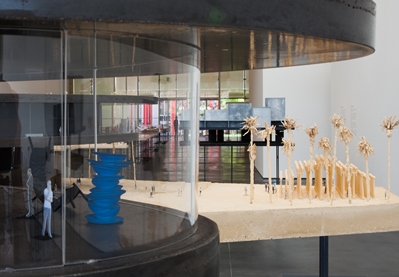 Installation view, The Presence of the Past: Peter Zumthor Reconsiders LACMA
Installation view, The Presence of the Past: Peter Zumthor Reconsiders LACMA
Working first to expand Piano’s plan to include the Resnick Pavilion, an open-air plaza, and a number of large-scale public artworks, I then began to consider even more ambitious possibilities. What if, instead of being hidden, a museum’s collections were visible even when they were in storage? What if art objects could be methodically rotated to describe many cultural stories and not just one chronological and geographic historical narrative? What if there could be a comfortable and seamless transition from the casual space of an outdoor plaza to the inner sanctum of a meditative gallery? Could a museum have lots of windows to see outside, could kids be accommodated as easily as art historians, and could an arrangement of coincident spaces be suited to contemplation, education, or just hanging out? And instead of being a notorious energy hog, could a public museum building collect the energy of the sun to give back to its environment? Could the art museum’s architecture be reconsidered from scratch? These were some of my questions.
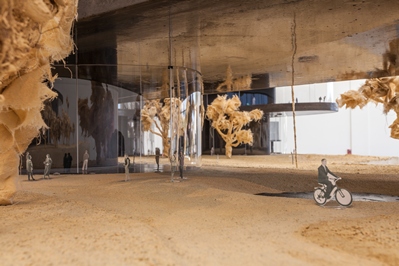 Installation view, The Presence of the Past: Peter Zumthor Reconsiders LACMA
Installation view, The Presence of the Past: Peter Zumthor Reconsiders LACMA
Art museums in the United States have been established and developed over the last 150 years, during which time art, art history, and the world have changed dramatically. Certainly museums have evolved, especially over the last few decades—consider, for example, the invention of blockbuster exhibitions, new conservation methodologies, or vastly expanded educational initiatives, community outreach, and diversification of collections.
Yet the general organization and practice of art museums have not been fundamentally reconsidered since before the development of media like photography and film, the advent of modernism in art and design, or the invention of the airplane, which has altered the initial premise of presenting artworks from places people couldn’t likely visit. The centrality of the direct experience with art demands a new paradigm.
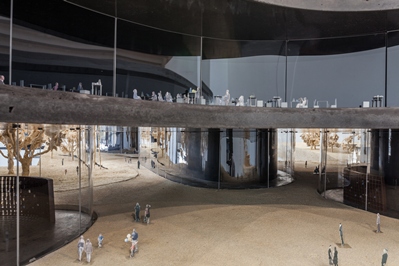 Installation view, The Presence of the Past: Peter Zumthor Reconsiders LACMA
Installation view, The Presence of the Past: Peter Zumthor Reconsiders LACMA
With the aim to develop LACMA into one of the most inventive and forward-thinking art museums in the world, I called architect Peter Zumthor nearly the day I decided to accept the position of director seven years ago. Having already worked with him and visited all his buildings (including two museums), I was convinced that he had the skills, the experience, and the sensitivity to reconsider LACMA. Peter Zumthor’s architecture has no signature style; rather, it is always a specific response to a particular circumstance and location. Our museum occupies a very special site: the Miracle Mile corridor of Wilshire Boulevard, one of L.A.’s key arteries. Surrounded by a stylistically diverse cluster of buildings from different eras, LACMA is within Hancock Park, which was founded around the incomparable, otherworldly La Brea Tar Pits, with their links to a primordial Pleistocene Los Angeles.
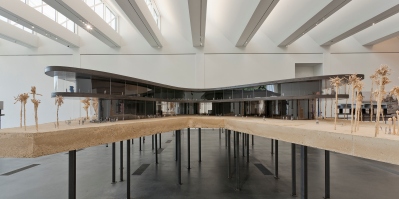 Installation view, The Presence of the Past: Peter Zumthor Reconsiders LACMA
Installation view, The Presence of the Past: Peter Zumthor Reconsiders LACMA
With support from LACMA’s trustees and the County of Los Angeles, we have worked carefully over the last six years to develop this preliminary plan. Our goal is to create a new LACMA that would be responsive to its existing environment and have the potential to inspire its future. This exhibition is intended to give the public a sense of this process in its early stages within the context of the history of this unique and significant site.
Michael Govan, LACMA CEO and Wallis Annenberg Director



